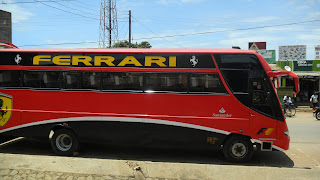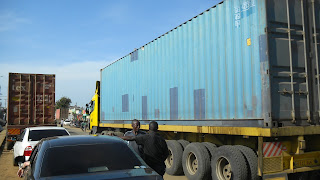(Editor' Note: I just discovered I never posted this blog entry while in Kenya. Apparently I was having Internet connection problems when I wrote it, just after arriving in Migori by cross-country bus from Nairobi. Now that I'm home, I want to post it, but also add a postscript. Looking back, I was surprised how easy it was most of the time to connect to the Internet in Kenya-even in rural areas. Kenya's communications industry has done a great job getting Kenyans "connected" by building an extensive cell phone network throughout the country over the last few years. It seems nearly everyone has a cell phone or access to one. This means you can connect to the Internet through the phone system if you have a WiFi modem for your computer. Although many rural villages like Bware are just starting to get limited electricity (e.g. none of the six schools where we conducted screenings have electricity yet), many adults in Bware have cell phones. So how do they get their phones charged if they don't have electricity? Well some people have solar chargers while others use a cell phone charging system Kate discovered---she took her phone to a little shop where she paid a small fee & left it overnight; in the morning it was charged. She thinks they used some type of car battery system to charge the phones. So just like in the USA, having a cell phone lets people connect to each other, conduct business, and even pay bills using a system called "M-Pesa." All in all, pretty cool!)
So this is the blog I originally wrote 9/27/12:
Having lots of trouble connecting to Internet so won't be able to post as much as I hoped unless problems can be worked out. Have been unable to connect to Internet using my tablet computer using the Internet modem purchased in Nairobi. (Editor's note: I discovered that although I had the correct modem, no phone card had been purchased to "charge it up." Once I did that, the modem worked fine). Tonight using a friend's computer but connection is slow. It's just started raining outside but it's nighttime-8:30 PM, so it's not a problem. Arrived in Migori in western Kenya yesterday after 7 1/2 hour bus ride. Passed through gorgeous country inc dry Rift Valley-saw herd of zebras, lots & lots of small cattle & goat herds being tended by men or boys. Also lush countriside as we climbed in altitude; lots of banana trees, sugar cane, corn, tea. We're staying in two cottages in Migori on the St Joseph Mission Hospital campus. Will write more later.


































































